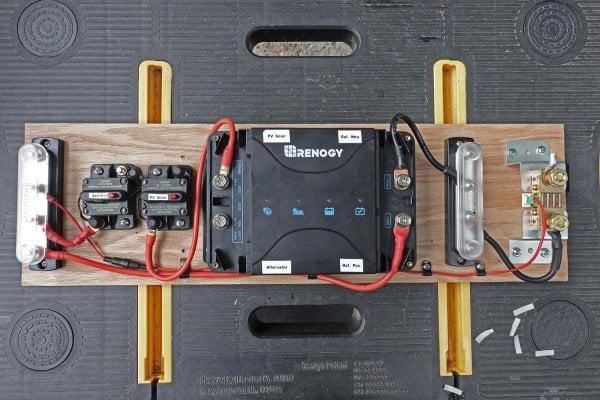A lot of options for battery systems in pop up camper have been well covered on this forum. Here's what I did in our ATC Bobcat. We have a smaller camper so it takes creativity to keep systems compact and light. A year ago I replaced our AGM battery with a Renogy lithium 100ah smart battery. I installed a Renogy 50A dual charge controller to maintain the battery. I build the camper in a side dinette style. The seats are also lids to storage underneath. The front seat has an angled seat back against the rear wall. I installed the dual charge controller behind the seat back.

My main camper power switch is on the left. The fuse box is auxiliary and for the two power points to the right (will be visible in a photo below). The main wires run below to the battery.

I installed new 6awg from the truck's engine bay to the camper and used 6awg for the short lengths between the controller and camper battery.

Below is the seat back in place along with the protection for the battery. In regard to heat generated by the controller. I have vent holes in the sides of the seat back support, the hole in the bottom front to view the indicator lights, and the top of the seat back support is open. In a year of use, I've not felt any heat from the unit.

Below is the hinged padded seat in place.

I works well for us and is compact.

My main camper power switch is on the left. The fuse box is auxiliary and for the two power points to the right (will be visible in a photo below). The main wires run below to the battery.

I installed new 6awg from the truck's engine bay to the camper and used 6awg for the short lengths between the controller and camper battery.

Below is the seat back in place along with the protection for the battery. In regard to heat generated by the controller. I have vent holes in the sides of the seat back support, the hole in the bottom front to view the indicator lights, and the top of the seat back support is open. In a year of use, I've not felt any heat from the unit.

Below is the hinged padded seat in place.

I works well for us and is compact.

